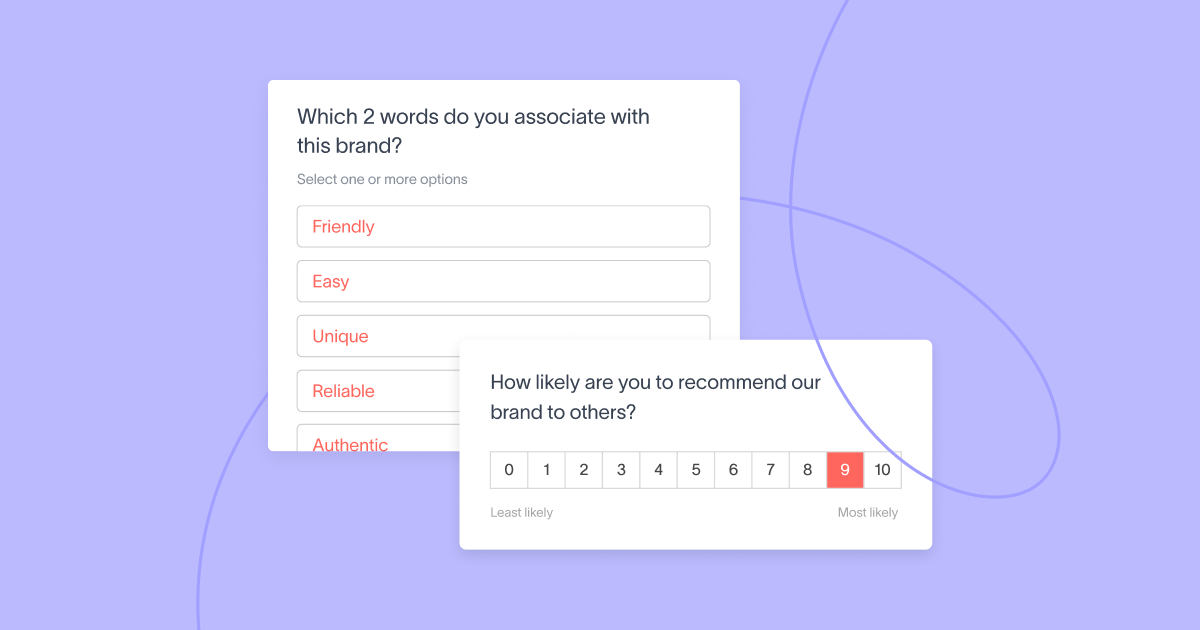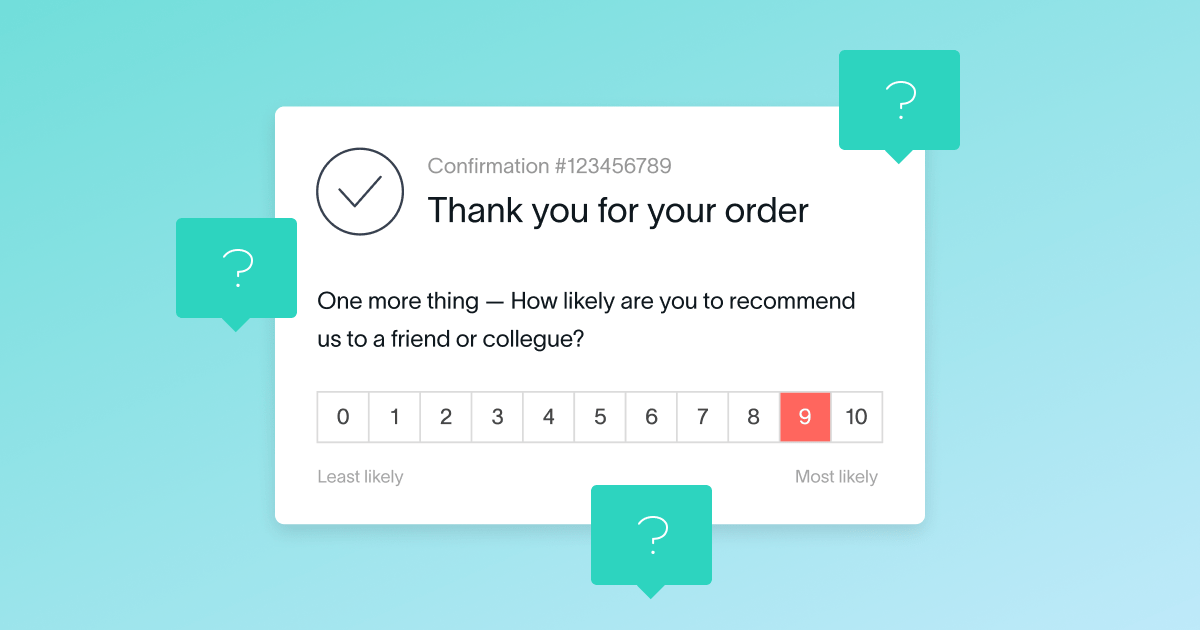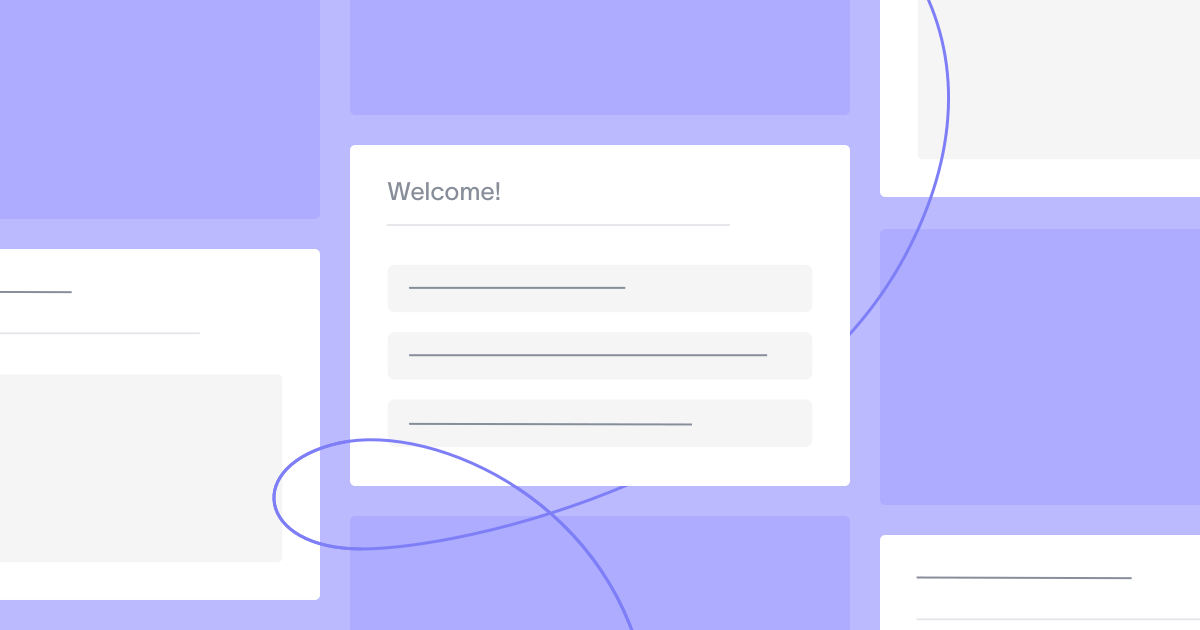Have you ever been asked a question you weren’t sure how to answer? Maybe the wording of the question was confusing and your inability to answer wasn’t because of your lack of understanding, but rather the murkiness of the question itself. Perhaps it was that, instead of one simple, straightforward request, you were asked a double-barreled question – a type of question that’s actually two questions in one.
Now, picture your employees or customers in that very situation when you survey them about their experience with your company.
You want your employees to be able to quickly and accurately give you feedback about, say, the recruitment process at your company, or for your customers to tell you what they think about your product or service.
Understanding double-barreled questions – and knowing how to avoid them in your employee and customer surveys – is a great place to start.
In this guide, we’ll discuss:
- What is a double-barreled question?
- Examples of double-barreled questions
- How to avoid writing double-barreled questions
- Other common survey errors to avoid
What is a double-barreled question?
A double-barreled question, also known as a double-direct or compound question, is a question that asks about more than one topic but only allows for a single answer. Since double-barreled questions ask about two different issues in one question, it’s impossible to know which question the respondent’s answer applies to.
Double-barreled questions are easy to identify because they typically include words like “and” or “or” to connect the series of questions.
For example, consider the questions: “Are you hungry or thirsty?” and “Do you want coffee and breakfast?”. Both are double-barreled questions that ask your opinion about multiple things. They may require two or more answers to respond with how you really feel or what you really want.
What if you’re not hungry, but thirsty, and your response options are simply “yes” or “no” – how do you respond?
That conundrum is exactly what makes double-barreled questions confusing and difficult to answer.
When you ask your employees and customers how they feel or what they want, you want to be as specific as possible. By asking two questions in one, you make it difficult for your employees and customers to answer either one accurately or honestly.
As a rule of thumb, you always want to avoid double-barreled survey questions to receive clear, concise, and actionable feedback.
Examples of double-barreled questions
Feeling unclear about how to avoid double-barreled questions in your surveys? Not to worry.
Here are some examples of double-barreled questions in employee surveys and customer surveys, respectively.
Double-barreled employee survey questions
- How would you rate your recent training and onboarding process?
- Was the recruiter or hiring manager helpful throughout the recruitment process?
- Would you recommend this company to your friend and how likely are you to do so?
- Are you happy with your work environment or do you prefer working from home?
- Does your technology make you feel productive and connected with your team?
Double-barreled customer survey questions
- Was the product easy to find and did you buy it?
- How likely are you to return to or recommend this store?
- Did your recent purchase meet your needs and would you buy it again?
- How satisfied were you with your recent in-store experience and purchase?
- Was the website helpful and did the chatbot make it easy to get your questions answered?
As you can see, each double-barreled question example asked about two separate topics in the same question. Questions like this can influence responses, leading to inaccurate data or causing people to feel frustrated and not respond at all.
How to avoid writing double-barreled questions
Correcting surveys with double-barreled questions is simple. Let’s break down the three easiest ways to avoid double-barreled questions.
1. Split up your survey questions into separate questions
The most straightforward fix for a double-barreled question is to split it up. Doing this has two benefits: your employees and customers won’t get confused, and you can interpret the results more accurately.
Let’s look at one of the above examples: “Did your recent purchase meet your needs and would you buy it again?”
If a customer had answered “yes,” you wouldn’t necessarily know if they were saying “yes” about the recent purchase meeting their needs or if they would consider buying the item again.
And if they said “no,” it’s possible that the purchase met their needs, but they didn’t have a great buying experience so they wouldn’t buy the product again.
Either way, based on the survey results alone, you would have no way of knowing their true opinion – including what went right or wrong.
The split-out correction would be:
- Question 1: Did your recent purchase meet your needs?
- Question 2: How likely are you to purchase the product again?
2. Align the questions to your goals for accurate results
Another fix would be to ask more intentional questions that strictly align with your survey goals.
Take the work environment question, for example – Are you happy with your work environment or do you prefer working from home?
The question is a bit confusing. To help clarify the question, consider asking yourself if you’d like feedback on your employees’ overall hybrid working experience or the tools they need to succeed at home or in the office. And ultimately, which question is more in sync with the goal of the survey?
Aligning your questions to the ultimate survey goal is the best way to get actionable feedback to help you reach your objectives.
3. Proofread your questions before sending them
Lastly, don’t forget to proofread. Re-read your questions before submitting the survey to make sure your questions only ask about one topic each.
You could send a test survey to a colleague for another set of eyes on the questions. Ask them to gut-check that the survey is clear and stays true to your goals.
Other common survey question errors to avoid
In addition to double-barreled questions, survey creators should attempt to avoid all types of survey bias. Below are common questions to know and stay clear of when building your survey.
Leading questions
Leading questions sway respondents’ answers one way or another, as opposed to leaving room for objectivity. They typically contain biased language to encourage respondents to answer a certain way, but they can often be tricky to identify.
Here’s an example: How great is our hard-working customer support team?
Here it is fixed: How would you describe your experience with the customer support team?
Whether intentional or unintentional, if your respondent is guided toward an answer, your survey data will likely contain unhelpful and untrue results.
Loaded/Assumptive questions
A loaded question contains an assumption about a respondent’s habits or perceptions. As a result, people inadvertently agree or disagree with an implicit statement when answering the question.
Here’s an example: How often do you exercise twice a day?
These types of questions are often context-based, so fixing these mistakes doesn’t always require tweaking the language you used. Instead, ensure that your previous survey question or existing customer information qualifies the potentially “loaded” question.
For example, ask if your audience exercises twice a day first, and then ask how often they exercise. If they don’t exercise twice a day, use conditional skip logic so that the customer doesn’t need to answer the irrelevant question.
Ambiguous questions
An ambiguous question asks about a topic too broad for respondents to provide a useful answer to. Because it isn’t specific enough to a particular topic, ambiguous questions are open to interpretation and responses to this type of question are often inaccurate.
Here’s an example: If our company offered a new product, would you be interested?
This question is nearly impossible to answer because you haven’t told your audience anything about the product besides that it’s new. Instead, be as specific as possible so you can collect data that’s both insightful and actionable.
Double-negative questions
A double negative question contains two negatives in the same sentence, and including them in your survey questions can confuse your respondents. Avoid double negatives in your survey questions by checking for proper grammar.
Identify double negatives by looking for the words “no” or “not” in your questions along with the following words:
- Words with the prefix “un-”. A double negative question like this may sound like “Was the room not untidy?” Remove the double negatives to instead read: “Was the room tidy?”
- Negative adverbs. A question with this type of double negative could sound like “Do you rarely not shop in-store?” Fix this instance of double negatives to instead read: “Do you shop in-store?” and “If so, how often?”
- Exceptions. Words like “unless” or “except” paired with “no” or “not” can create double negatives like this statement: “Would you not purchase from us again except for a sale?” Tidy up this question to instead read: “Would you purchase from us again?” and “If so, do you prefer to buy items on sale?”
Keeping an eye out for the types of words outlined above can help fine-tune your survey data.
Avoiding double-barreled questions for accurate survey data
Double-barreled questions and other types of survey question errors are easy to avoid if you know what to look out for. By carefully examining and constructing your questions, your survey results will be more straightforward and actionable – a win for you and for those whose experiences you want to improve.
Ready to put your knowledge of how to avoid double-barreled questions to use? Start gathering feedback with Delighted’s free online survey maker.







